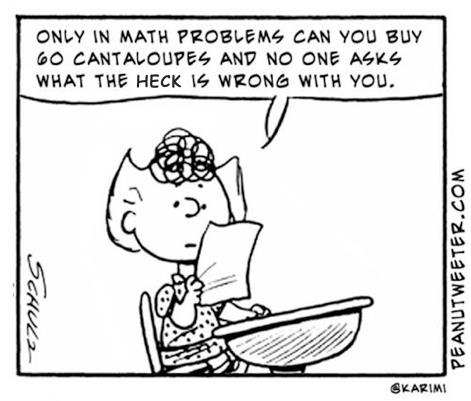Students in 7B have been focusing one math class a cycle on math communication. This focus is linked to the schools math LIP goal. We have looked at filling in the missing details of an "And Then" story and practiced justifying our answers. Last problem solving class we did some math talking. Students were split into groups and given a sheet with 4 word problems. They had to work in their groups to figure out the problem, but there was a catch; limited pencil and paper work! Students were required to talk through their thinking, strategies, and answers with using formal math language (using sum instead of answer in an addition question). They were only allowed to use a pencil and paper if they needed to do the "math" (algorithm) and couldn't do it in their heads. Before going off on their own we practiced and I model what I was hoping to hear and see. Talk everything out loud, even if it doesn't make sense. Tell your partner what you are thinking.
I was very pleased at listening in on their conversations and how they worked together to come up with an answer. One group was finished ahead of time so I asked them to record their solutions. Here is what they came up with.
Question 1:
A total of 32 students are going on a field trip. Each student must pay $4.75 for travel and $5.50 for dining. How much money should the teacher collect for the trip?
Question 2:
The restaurant has 6 tables with 4 seats each,
10 tables with 2 seats each, and 4 tables with 6 seats each. If half the seats
in the restaurant were taken, how many seats were taken?
Question 3:
There are 496 cases of tennis balls at the
store. Each case contains 24 tennis cans. Each can contains 3 balls. How many
balls are at the store?
Question 4:
A bus stops at the corner of Elm Street and Oak
Street every half hour between 9am and 3 pm and every 15 minutes between 3pm
and 6pm. How many times will a bus stop at the corner between 9am and 6pm?





No comments:
Post a Comment